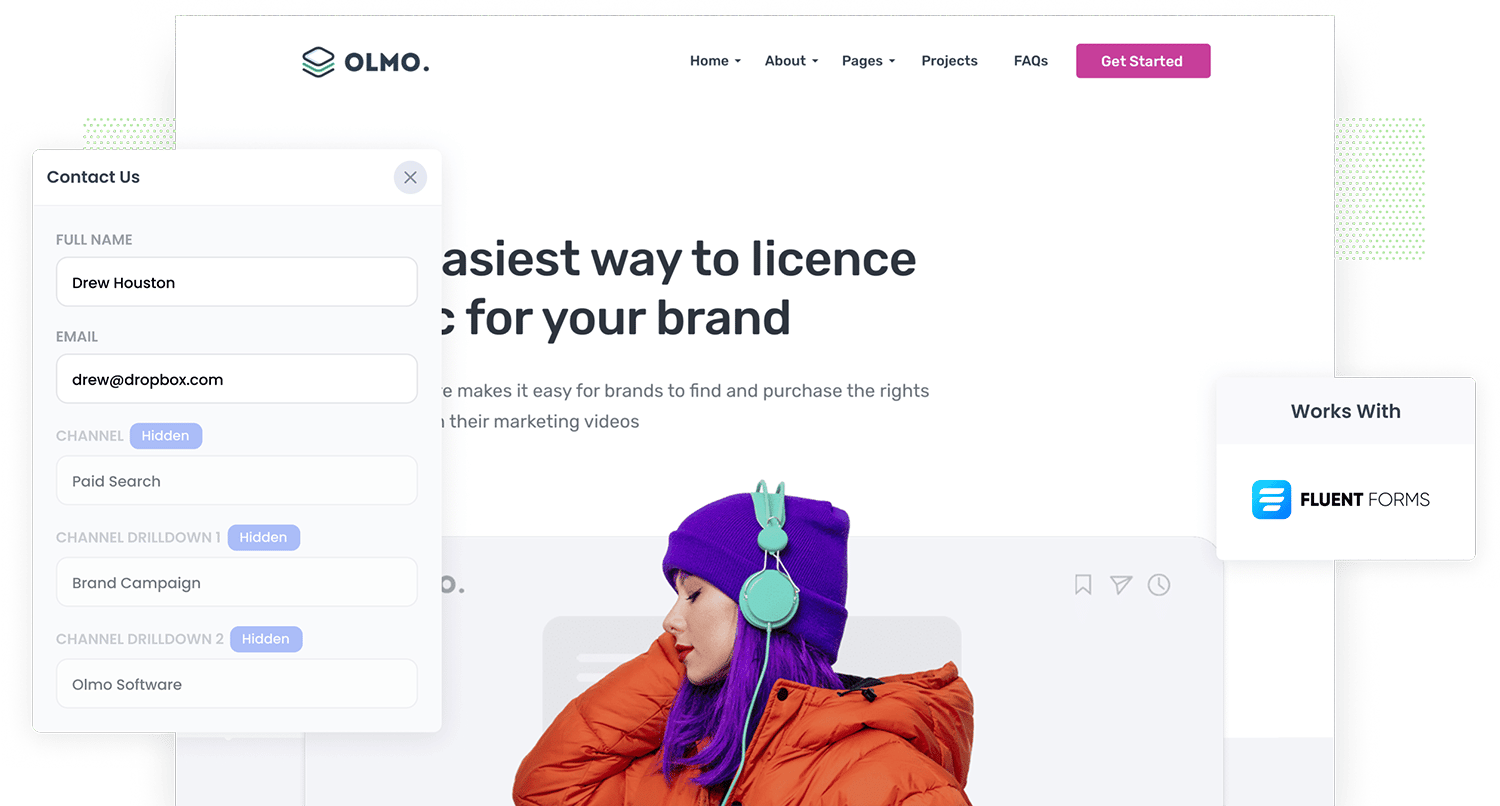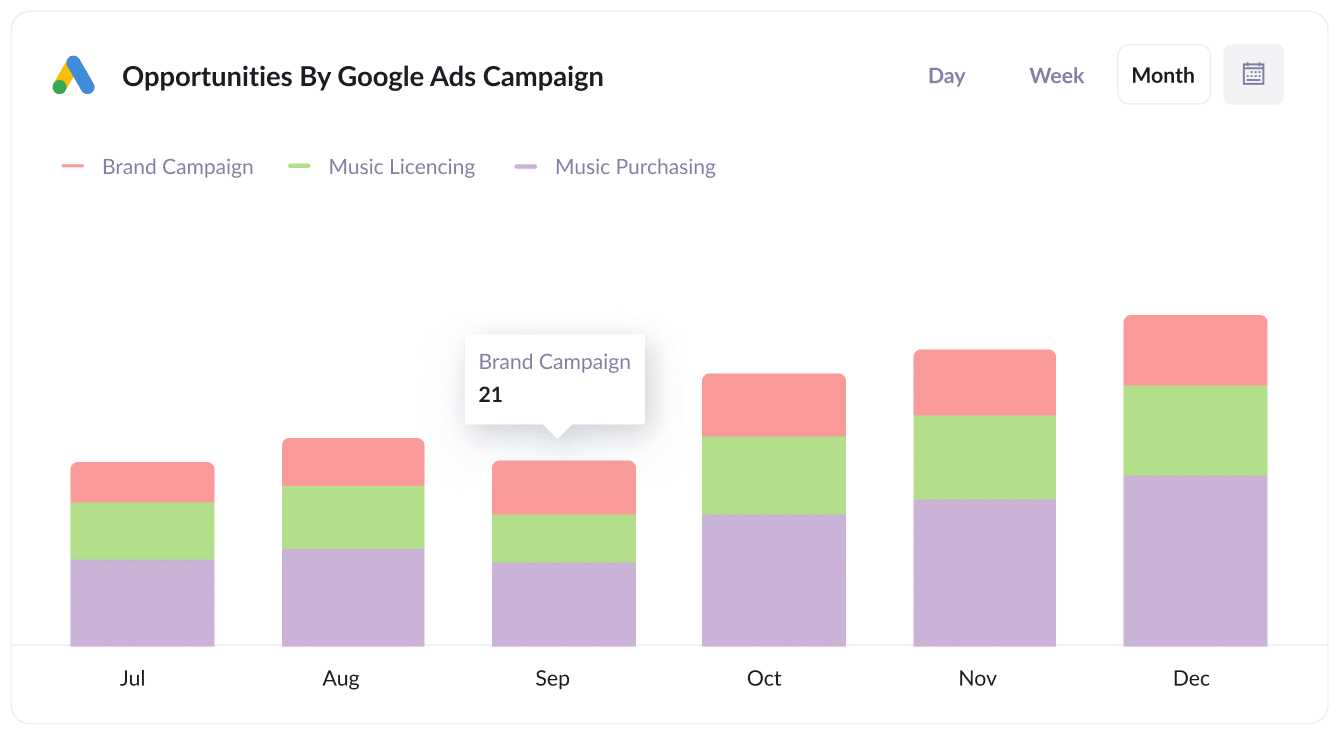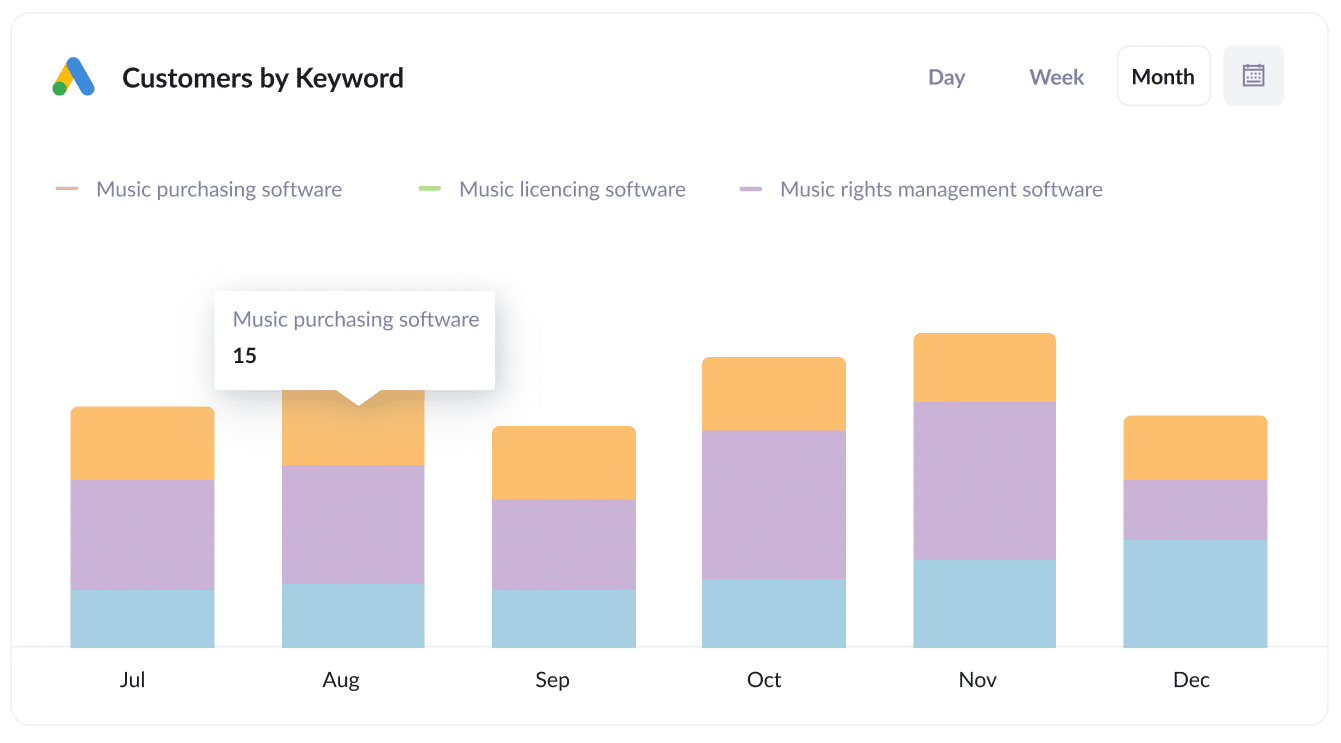4 simple steps to capture Google Ads data in Fluent Forms
Learn how to capture Google Ads data in Fluent Forms so you can track which campaigns, ad groups, etc are generating your leads

Are you struggling to track how many leads you get from your Google Ads?
If so, it could be a big problem for your business. If you can't track how many leads you are getting, then you don't know how successful your efforts are.
In this article, we'll show you how to use a tool called Attributer to capture Google Ads data with each submission of your Fluent Forms, so you can track which campaigns, ad groups, keywords, etc. are generating your leads.
4 simple steps to capture Google Ads data in Fluent Forms
Attributer makes it easy to capture Google Ads data inFluent Forms. Here’s how it works:
1. Add UTM parameters to your ads

The first thing you need to do is add UTM parameters behind each of your Google Ads.
If you're not familiar with UTM parameters, that's ok. They are essentially little bits of text that you append to the end of the URL you are sending people to from your Google Ads. They are a standard thing on the web that let analytics tools (like Attributer) know where a particular visitor has come from.
For instance, if the destination page you're guiding someone to is attributer.io/integrations/fluent-forms, your ultimate URL (with UTM parameters) may look a bit like this:
https://attributer.io/integrations/fluent-forms?utm_medium=paidsearch&utm_source=google&utm_campaign=brand-campaign
You can put whatever bits of information you want in the UTM's, but the general best practice for Google Ads is something like:
- UTM Medium = Paid search
- UTM Source = Google
- UTM Campaign = The name of your Google Ads campaign
- UTM Term = The name of the ad group the ad belongs to
- UTM Content = The specific ad
Tagging your URLs with UTM parameters is easy and we've even created a video showing you the easiest way to do it.
2. Add hidden fields to your forms

The second step is to add a series of hidden fields to your forms.
Fortunately, adding hidden fields to Fluent Forms is as simple as dragging and dropping a 'Hidden' field into your forms and full step-by-step instructions can be seen here.
The hidden fields you need to add are:
- Channel
- Channel Drilldown 1
- Channel Drilldown 2
- Channel Drilldown 3
- Landing Page
- Landing Page Group
3. Attributer writes Google Ads data into the hidden fields

Now that everything is set up, Attributer will start to track where your website visitors are coming from (in part by looking for the UTM parameters you added to your ads in step 1).
And when a visitor completes one of the Fluent Forms on your site, Attributer will write the information about where they came from (like the campaign, ad name, etc they clicked) into the hidden fields you added in step 2.
To illustrate, imagine you're a marketer at Fluent Forms and you're running Google Ads to get more people to use your form builder. When someone completes a form on your site, Attributer would populate the hidden fields as follows (depending on the UTM parameters you put behind your ads):
- Channel: Paid search
- Channel Drilldown 1: Google
- Channel Drilldown 2: Brand campaign
- Channel Drilldown 3: Fluent Forms
4. Google Ads data is captured in Fluent Forms

Finally, when the visitor submits the form on your site, that attribution data that Attributer wrote into the hidden fields is captured alongside the lead's name, email, etc.
And once the data is captured in Fluent Forms, you can do a whole bunch of things with it, including:
- See it in your WordPress Dashboard (in the Entries section of Fluent Forms)
- Add it to each new lead notification email so you’ll be able to instantly see where each lead came from
- Send it to your CRM (including Salesforce, Zoho CRM, Pipedrive, etc) so your sales team can see where each lead has come from
- Use it to run reports that show you which Google Ads campaigns are actually generating you leads, customers & revenue.
Why using Attributer is the best way to capture Google Ads data in Fluent Forms
There are other methods for tracking your Google Ads in Fluent Forms, so why choose Attributer?
Here’s why:
1. Captures all traffic
Attributer doesn't just tell you which leads came from your Google Ads. It tells you where EVERY lead that completes your Fluent Forms comes from.
This includes leads that come to your site from Organic Search, Organic Social, Paid Social & more.
This means that you can see where ALL your leads & customers are coming from, not just those from your Google Ads campaigns.
2. Remembers the data as visitors browse your site
Other ways of capturing Google Ads data in Fluent Forms only work when the form is submitted on the same page where the visitor first landed.
To illustrate why this is a problem, imagine someone clicks on your Google Ads and lands all excited on your website's homepage. Then they click the 'Contact Us' button and are taken to a different page to fill out a contact form.
Because the form is completed on a different page to where the visitor originally landed, no information about where that lead came from would be passed through.
Attributer solves this problem though. Unlike other methods, Attributer stores the information on where they came from in a cookie in the user's browser.
So regardless of which page a visitor submits a form on, the information on where they came from (I.e. Google Ads) is passed through.
3. Provides cleaner data
Most other tools for capturing the UTM parameters you place behind your Google Ads will simply capture the raw UTM parameters exactly as you entered them in Google Ads.
Unfortunately though, UTM parameters often get mixed up (particular if multiple people or agencies have worked on your Google Ads over time) and this can result in messy data.
As an example, imagine some of your Google Ads campaigns are tagged with UTM_Source= Google.com (capital G), others with UTM_Source= google (lowercase, no domain), and others with UTM_Source= adwords.
If you were to capture these raw UTM parameters in Fluent Forms and try to use them to run reports, you'll get three different sources that you would have to manually stitch together.
With Attributer, you don't have to deal with this because it takes the possibility of capitalization and other inconsistencies into account, and would categorize these leads as 'Paid Search' regardless.
4. Captures landing page data as well
As well as passing through information on where a lead came from (I.e. Google Ads), Attributer also captures the initial landing page (e.g., fluentforms.com/blog/best-form-builder) and the landing page group (e.g., /blog).
This allows you to see how many leads you are getting from certain types of content on your site (like your blog for instance) as well as drill down into which blog posts are generating the most leads.
3 example reports you can run when you capture Google Ads data in Fluent Forms
Before I started Attributer, I had been consulting on marketing & analytics for over 15 years.
During that time, I ran hundreds of reports for my clients to understand where their leads were coming from and what we needed to do to generate more.
Below are some of the reports I've found most insightful over the years:
1. Leads by Channel

Because Attributer captures the source of ALL your leads (not just those from Google Ads), you are able to run reports like the one above which shows the number of leads you get each month broken down by the channel they came from.
This can help you understand how Google Ads performs for your business relative to other channels, and helps you see whether it's actually where the biggest opportunities to grow is.
For instance, you might see (like in the example graph above) that you are getting most of your leads from Organic Search. But if you are putting most of your budget into Paid Search, it might be time to rethink that.
2. Opportunities by Google Ads campaign

If you've got a variety of different campaigns running in Google Ads, then this report can help you understand which of them are working best.
It shows how many sales opportunities have been generated each month form your Google Ads, broken down by the Google Ads campaign they came from.
By running this report, you can get a better understanding of which campaigns are actually generating sales opportunities for your business and which ones are just generating website visitors that don't convert (and should therefore be discontinued).
3. Customers by Keyword

If you put the keyword in the UTM parameters behind your Google Ads (which is easy to do using tracking templates), then you can capture the exact keywords your customers are using to find your business.
This can help you to understand which keywords are generating you the most customers, and you can then go and bid higher on those terms to help grow your business.
Wrap up
If you've been struggling to track how many leads you get from your Google Ads, then Attributer could be a great solution.
It will capture the UTM parameters you use behind your Google Ad campaigns with each submission of your Fluent Forms, and you can then send that information into your CRM or a spreadsheet and run reports to understand which campaigns are generating leads & customers.
Best of all, it's free to get started and only takes about 10 minutes to set up, so start your 14-day free trial today.
Get Started For Free
Start your 14-day free trial of Attributer today!

About the Author
Aaron Beashel is the founder of Attributer and has over 15 years of experience in marketing & analytics. He is a recognized expert in the subject and has written articles for leading websites such as Hubspot, Zapier, Search Engine Journal, Buffer, Unbounce & more. Learn more about Aaron here.
